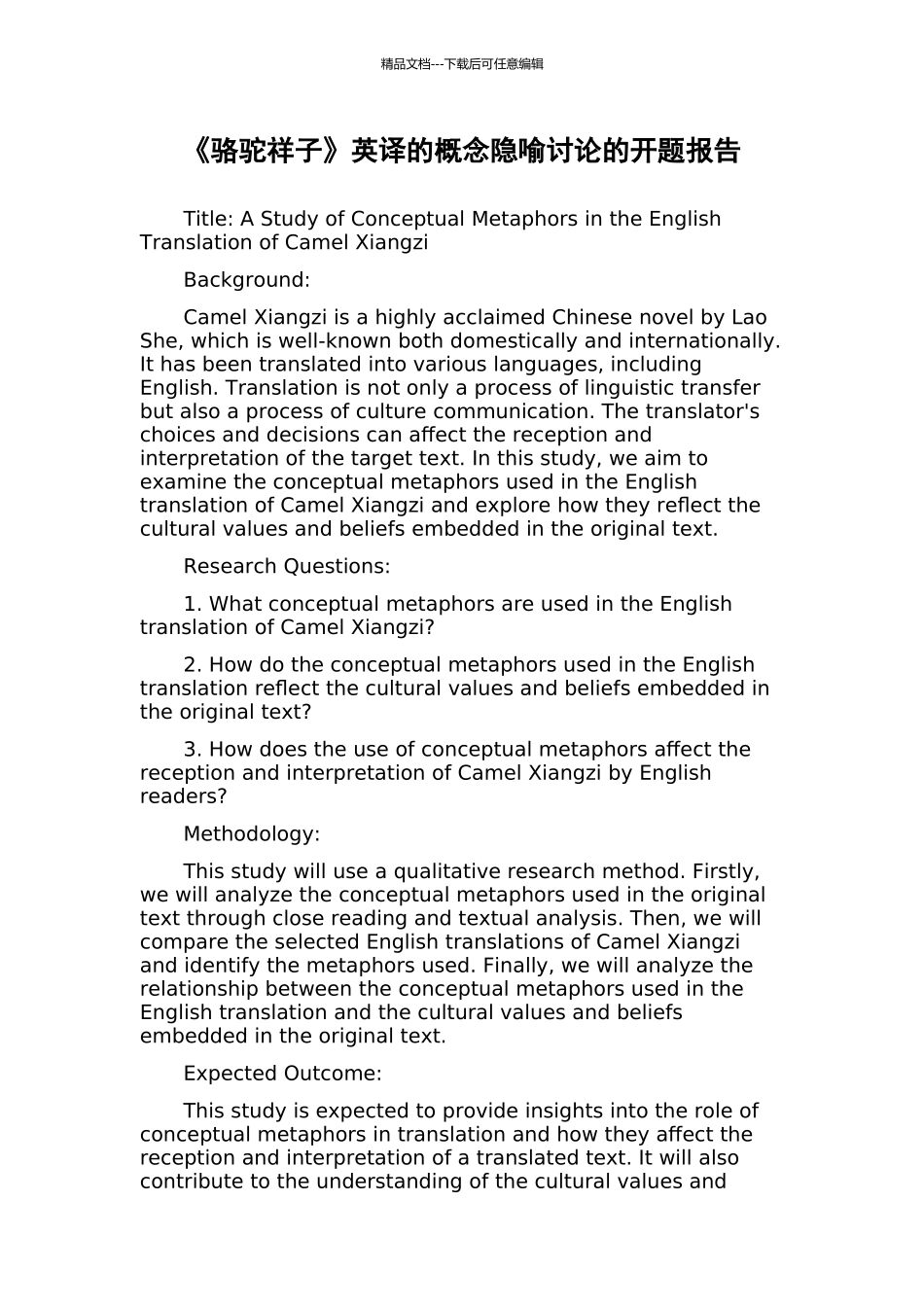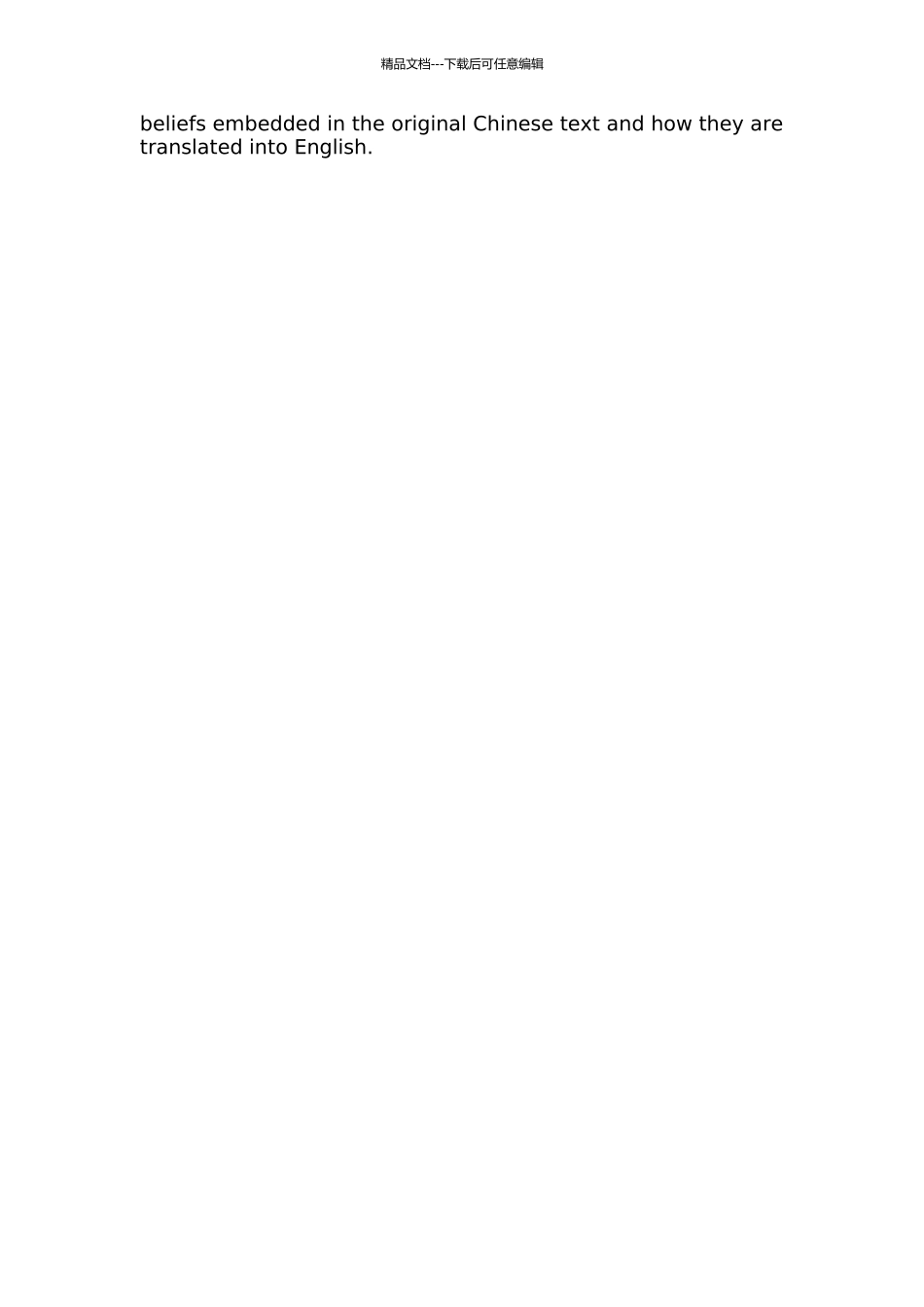精品文档---下载后可任意编辑《骆驼祥子》英译的概念隐喻讨论的开题报告Title: A Study of Conceptual Metaphors in the English Translation of Camel XiangziBackground:Camel Xiangzi is a highly acclaimed Chinese novel by Lao She, which is well-known both domestically and internationally. It has been translated into various languages, including English. Translation is not only a process of linguistic transfer but also a process of culture communication. The translator's choices and decisions can affect the reception and interpretation of the target text. In this study, we aim to examine the conceptual metaphors used in the English translation of Camel Xiangzi and explore how they reflect the cultural values and beliefs embedded in the original text.Research Questions:1. What conceptual metaphors are used in the English translation of Camel Xiangzi?2. How do the conceptual metaphors used in the English translation reflect the cultural values and beliefs embedded in the original text?3. How does the use of conceptual metaphors affect the reception and interpretation of Camel Xiangzi by English readers?Methodology:This study will use a qualitative research method. Firstly, we will analyze the conceptual metaphors used in the original text through close reading and textual analysis. Then, we will compare the selected English translations of Camel Xiangzi and identify the metaphors used. Finally, we will analyze the relationship between the conceptual metaphors used in the English translation and the cultural values and beliefs embedded in the original text.Expected Outcome:This study is expected to provide insights into the role of conceptual metaphors in translation and how they affect the reception and interpretation of a translated text. It will also contribute to the understanding of the cultural values and 精品文档---下载后可任意编辑beliefs embedded in the original Chinese text and how they are translated into English.

